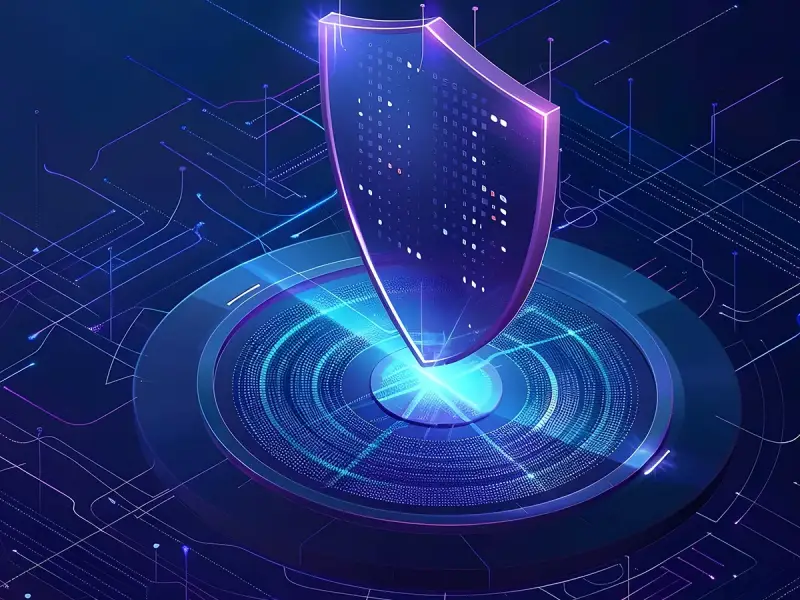In cybersecurity, distinguishing between attack surface vs threat surface is key. The attack surface includes all potential entry points for attackers, while the threat surface defines the range of threats targeting these points. This article will explain these differences and offer strategies to manage and reduce risks effectively.
Defining Attack Surface
The attack surface refers to all possible vulnerabilities and weak points that can be exploited by attackers, including the social engineering attack surface. It encompasses every potential point where unauthorized users might gain access to a system, making its management vital for minimizing risks. Components of an attack surface includes network ports, vulnerable applications, and human error.
The larger the large attack surface, the greater the vulnerability and risk. Therefore, organizations must continuously monitor and minimize their attack surfaces to reduce risks effectively and implement attack surface reduction strategies.
Digital attack surface
The digital attack surface refers to all the various points in the digital environment that can be targeted by a cyber criminal. It includes applications, servers, ports, and shadow IT. Each of these components can be exploited to gain unauthorized access to systems and sensitive information.
Comprehending these digital components enhances security measures and guards against potential cyber threats.
Physical attack surface
The physical attack surface refers to all tangible assets that could be exploited by an attacker, including physical attack surfaces such as endpoint devices and discarded hardware that still contain sensitive data.
Implementing access control measures and surveillance systems protects physical assets from unauthorized access, thereby safeguarding the physical attack surface.
Understanding Threat Surface
The threat surface represents the scope of possible threats that could exploit vulnerabilities in a system. Managing the threat surface requires regular identification and addressing of potential entry points for cybercriminals. Effective management includes identifying all potential vulnerabilities and attack vectors within an organization’s infrastructure.
Common threat vectors
Common threat vectors include:
- Social engineering, which manipulates individuals to divulge sensitive information
- Malware, a prevalent threat vector that encompasses various malicious software types aimed at compromising systems
- Ransomware attacks, which have surged recently, encrypting data and demanding payment for access
Other common attack vectors include phishing attacks, software vulnerabilities, compromised devices, network intrusions, malware attacks, and the most common attack vectors, as well as new attack vectors, including a social engineering attack and potential attack vectors.
Emerging threats
New technologies, such as IoT devices, are expanding the threat landscape, presenting new vulnerabilities for exploitation by a threat actor and highlighting potential security risks and cybersecurity risks. Supply chain attacks are on the rise, targeting third-party vendors to compromise larger organizations. Threat actors are increasingly concerning, as they exploit zero-day vulnerabilities before security patches are available.
Malicious insiders also pose a unique emerging threat, leveraging their access for malicious purposes. Continuous surveillance promptly detects and responds to insider threats and emerging threats.
Intelligence-based Cyber Awareness for Contested Digital Environments
- Understanding Your Environment
- Deep visibility into all network traffic
- Risk Analysis
Attack Surface vs Threat Surface: Key Differences
| Aspect | Attack Surface | Threat Surface |
|---|---|---|
| Definition | Total number of all possible points where an attacker could gain access to a system | The entire range of potential threats and vulnerabilities that could affect a system |
| Focus | Entry points for exploitation | Overall exposure to potential threats and risks |
| Scope | Limited to technical aspects like ports, APIs, user interfaces | Broader — includes physical, social, human, and digital elements |
| Example Components | Open ports, misconfigured servers, endpoints, software vulnerabilities | Insider threats, phishing, supply chain risks, malware, and attack surfaces |
| Used By | Security engineers, red teams, penetration testers | Risk managers, security analysts, and threat intelligence teams |
| Goal of Assessment | Reduce exposure points attackers can exploit | Understand all risk vectors and prepare proactive defenses |
| Can Change Over Time? | Yes, as infrastructure grows or changes | Yes, influenced by evolving tactics, techniques, and procedures (TTPs) |
| Tools Used for Assessment | Vulnerability scanners, penetration testing tools | Threat modeling tools, NDR, threat intelligence platforms |
Understanding the differences between attack surfaces and threat surfaces allows organizations to better allocate resources to manage and mitigate specific risks. The attack surface encompasses all potential entry points for unauthorized access, while the threat surface focuses on the range of potential vulnerabilities that could be exploited.
Scope and focus
The attack surface encompasses all areas where an attacker could gain access, while the threat surface highlights specific threats targeting those access points. Understanding both surfaces is critical to achieving a comprehensive cybersecurity posture.
This distinction informs approaches to security management by focusing on different aspects of security.
Management strategies
Robust security controls reduce the impact of threats on an organization’s attack surface by addressing vulnerabilities preemptively. Strategies should include protecting against compromised credentials and login credentials, which often result from phishing or inadequate weak passwords practices.
Importance of Attack Surface Analysis
Attack Surface Analysis helps identify vulnerabilities by mapping all possible entry points and potential entry point in a system. As the attack surface expands, this analysis helps organizations prioritize security resources effectively against potential threats vs attack surface.
Regularly assessing and managing the attack surface management provides preemptive security measures.
Automated vulnerability scanning
Automated vulnerability scanning assesses the attack surface and identifies potential vulnerabilities effectively. These tools can help visualize and assess the attack surface of applications, though they may miss unknown vulnerabilities not explicitly defined.
Penetration testing
Penetration testing simulates real-world attacks to uncover weaknesses in the attack surface before they can be exploited. Unlike automated scans, penetration testing provides insights into the effectiveness of security controls and reveals vulnerabilities that might not be visible through scanning alone.
Effective Threat Surface Management
Effective management of the threat surface involves continuous education on the latest cyber threats, empowering employees to act as the first line of defense. Regular cybersecurity training helps employees stay informed about the latest threats and protective measures.
Continuous monitoring
Continuous monitoring is essential to manage the evolving landscape of cyber threats effectively. Automated scanning tools continuously monitor the attack surface, identifying vulnerabilities in real-time and providing timely insights on vulnerabilities.
The Cybersecurity and Infrastructure Security Agency (CISA) offers tools and resources to help organizations improve their cybersecurity frameworks.
Security controls
Robust security measures reduce the likelihood of successful attacks on an organization’s vulnerabilities. Security controls significantly reduce the risk that threat vectors pose to an organization’s assets and data.
Enforcing strong access controls and using multi-factor authentication are key to enhancing security posture.
Reducing Your Attack Surface and Threat Surface
Reducing both attack surfaces and threat surfaces involves a combination of proactive measures. Disabling unnecessary ports, patching vulnerabilities, and enforcing strong access controls are crucial steps. Implementing a zero-trust security model can effectively reduce the number of entry points vulnerable to attack.
Reducing potential vulnerabilities involves simplifying the network by disabling unused software and devices.
Implement multi-factor authentication
Multi-factor authentication (MFA) is an access control method recommended to reduce unauthorized access risks. By requiring multiple forms of verification, MFA adds an extra layer of security, making it more difficult for attackers to gain access even if they have compromised one form of authentication.
Regularly update and patch systems
Routine updates fix known vulnerabilities and enhance system security. Timely software updates address security vulnerabilities and close gaps that could be exploited by cybercriminals.
Regularly applying updates and patches ensures that known vulnerabilities are addressed, protecting systems from exploitation.
Employee training
Ongoing employee training is essential in cybersecurity to ensure that staff are aware of potential threats and can act accordingly. Training enables employees to recognize and respond to cyberattacks effectively, forming a critical defense line against security teams and security breaches.
Proactive employee training on the latest threat vectors keeps organizations ahead of potential attacks and enhances their security posture.
Government and Regulatory Roles
Organizations must comply with various regulations designed to protect sensitive data and secure systems. Government initiatives support organizations by providing resources and guidelines to strengthen their security program and cybersecurity efforts.
Compliance requirements
Adhering to specific cybersecurity regulations safeguards sensitive data and ensures system integrity. Implementing risk-based controls is necessary to safeguard sensitive information and comply with various cybersecurity standards and regulations.
Government initiatives
The Department of Justice and Department of Homeland Security are involved in efforts to combat ransomware. The StopRansomware.gov website provides resources to prevent and mitigate ransomware attacks.
Conclusion
Understanding the difference between an attack surface and a threat surface is foundational to building a resilient cybersecurity strategy. While the attack surface outlines all potential entry points a cybercriminal could exploit, the threat surface defines the scope of tactics and vectors that target these points. Managing both is essential—but doing it manually or with siloed tools is no longer enough.
That’s where Fidelis Network® NDR Solution comes in. It offers deep visibility across your hybrid infrastructure, automatically discovering assets, monitoring east-west traffic, and detecting advanced threats in real-time. With built-in threat intelligence and deception technology, Fidelis Network doesn’t just alert—it helps you respond faster and smarter.
By reducing your attack surface and actively managing your threat surface, Fidelis Network empowers you to stay ahead of attackers—not behind them.
- Transform threat insights into fast action
- Strengthen detection and response
- Gain full control across your environment
Frequently Ask Questions
What are the three types of attack surfaces?
The three types of attack surfaces are the digital attack surface, the physical attack surface, and the social engineering attack surface. Understanding these categories is essential for developing comprehensive security measures.
What is the difference between an attack surface and a threat surface?
The attack surface refers to all potential entry points for unauthorized access, whereas the threat surface pertains to the vulnerabilities that could be exploited. Understanding both is crucial for effective cybersecurity management.
How can automated vulnerability scanning help in attack surface management?
Automated vulnerability scanning significantly enhances attack surface management by continuously identifying and analyzing potential vulnerabilities in systems. This proactive approach allows organizations to address weaknesses before they can be exploited by attackers.
Why is employee training important in cybersecurity?
Employee training is essential in cybersecurity as it equips staff to identify and respond effectively to cyberattacks, thus serving as a vital defense against potential security breaches.
What are common threat vectors that organizations should be aware of?
Organizations should be aware of common threat vectors such as social engineering, malware, ransomware, phishing attacks, and software vulnerabilities. These factors are critical to maintaining robust cybersecurity.



